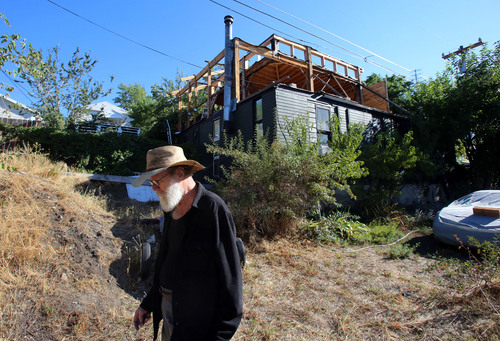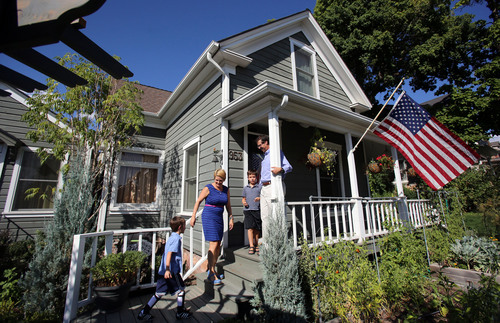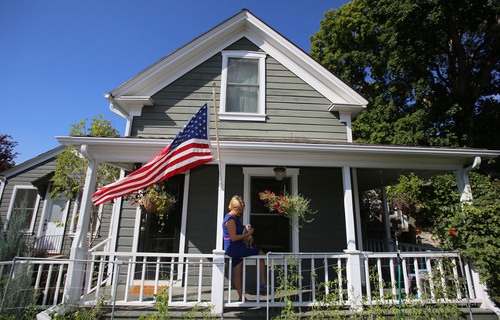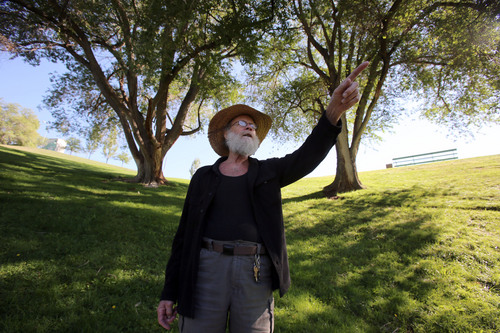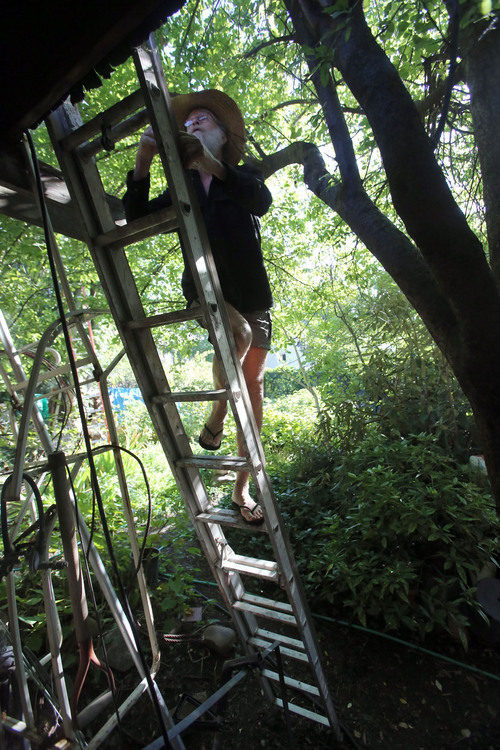This is an archived article that was published on sltrib.com in 2013, and information in the article may be outdated. It is provided only for personal research purposes and may not be reprinted.
This is the third in a series of reports giving readers an insider's view of life in Salt Lake City neighborhoods.
It's stately. It's funky. It's upscale. It's bohemian. It's the Avenues.
The Avenues neighborhood is adjacent to downtown and is one of Salt Lake City's oldest residential districts. It is home to artists and students and professors and lawyers and businesspeople and … you name it.
"Eclectic and eccentric" is how Kirk Huffaker of the Utah Heritage Foundation describes it. "It's Salt Lake's version of 'keeping it weird.' "
The streets are narrow and the blocks are short by Salt Lake City standards, and the architecture is diverse, to say the least. Beautiful Victorian houses stand next to little brick bungalows. Frame cottages can be found in the shadows of apartment buildings.
Tucked between City Creek Canyon and the University of Utah, it is remarkably quiet, yet quite lively. Its population is 21.7 percent minority. Some of its residents are wealthy; some are not. About 19 percent of its youngsters qualify for subsidized school lunch (a family of four that earns $43,600 or less), according to the Utah Community Data Project at the U.'s Bureau of Economic and Business Research.
Robert "Tree Bob" Brossard, 68, has lived in the Avenues since 1946. A retired handyman and tree trimmer, he takes his morning coffee at Cucina on Second Avenue and rubs shoulders with other regulars, including a filmmaker, a financial executive, a photographer/environmental activist, an art professor, and a contractor.
Growing up on Seventh Avenue in the 1950s, Brossard recalled, the great outdoors were just across the street and up the hill above Lindsey Gardens. In the days before TV and computers, neighborhood kids invented their own fun in the woods and hills surrounding the place.
"Back then, there were no people of color here," he recalled. "It was all white and all LDS."
—
Evolution • Things have changed. Deepika de Silva, who is originally from Sri Lanka but has lived in a number of European cities, is a senior vice president at a biotechnology firm in Research Park. She is married to a health-care analyst and their son attends the Madeleine Choir School, affiliated with the Catholic Cathedral of the Madeleine on South Temple.
"At first, we decided to live in the Avenues because it was cheap," she said of the couple's days in graduate school, when they rented a small apartment.
Later, they bought a house in the neighborhood because of its easy access to downtown, good schools and the U.
"It's the closest thing Salt Lake has to cosmopolitan," de Silva said. "It has diversity, it's eclectic and its a noncommuter alternative."
In Salt Lake City's early days, well-heeled residents built fine houses on First Avenue, Second Avenue and Third Avenue and to a lesser extent on Fourth Avenue, according to Huffaker. But development stopped there for a time until city engineers learned how to pump water higher up the hill — around the late 1800s.
Half a century later, the area had pretty much filled in up to 11th Avenue, and the place was in its prime. But in the 1960s, with the coming of better roads and cars, city residents began migrating to the suburbs — an era Huffaker describes as one of "decline" for the old neighborhood. During that period, speculators and developers bought up big, old houses and divided the interiors into student apartments. Others purchased small houses, razed them and put up apartment buildings.
"It was spreading like a cancer," recalled Sydney Fonnesbeck, who, with other concerned residents, formed the West Avenues Community Council and began a down-zoning drive to save historic houses.
—
Preservation • In 1980, Fonnesbeck was elected to the Salt Lake City Council and worked to strengthen preservation. Also that year, the Avenues Historic District was listed on the National Register of Historic Places.
Much of the neighborhood has now been gentrified, and the price of real estate reflects it. But that also means that many old houses have been renovated.
"When we first moved here, you could drive around and around looking for a house that had been redone," Fonnesbeck said. "Now you drive around and around to find one that hasn't."
Despite new zoning, so-called "monster homes" were the biggest issue in the neighborhood before the 2008 economic downturn. By contrast, these days the hot topic is whether to expand the dog park. Not everyone in the Avenues strolls its quiet walks with a canine friend, but it can seem that way.
The other big excitement is young people on skateboards screaming down the steep streets named for letters in the alphabet. But 18-year-old Eliza Grainger won't be among them. A West High grad, she's off to Dartmouth College.
Her family moved to the Avenues from Colorado 11 years ago, when her father joined the U. faculty. She grew up with two sisters and a brother and her stay-at-home mom in a 19th-century house. Eliza has worked for Planned Parenthood and got a small scholarship from the American Civil Liberties Union — things that would be jaw-dropping in some Utah neighborhoods but seem noncontroversial in this progressive village.
"I really like this neighborhood. It's a quirky little community," she said. "There is a nice mix of Mormon people and all kinds of liberal people."
For Jim and Jennifer Levy, the Avenues is sedate compared with their last home in Venice Beach, Calif. The Levys and their two young sons live on Second Avenue in a house they remodeled and landscaped with a little help from Jennifer's father. Acquaintances tell them wild stories about what went on in their house during the hippie-era of the 1960s and early '70s.
For Jennifer, unlike her native California husband, it was a return to the place where she grew up. And she likes the area more than ever.
"There are a lot of transplants in the neighborhood," Jennifer said. "It's Salt Lake City's Haight-Ashbury. It has a bohemian vibe."
The Avenues demographics
• Minority population • 21.7 percent
• Under age 5 • 10.4 percent
• School age • 10.2 percent
• College age • 14.8 percent
• Retirement age • 18.4 percent
• Families that qualify for subsidized school lunch • 19 percent
Source: U.'s Bureau of Economic and Business Research —
Points of Interest
• City Creek Canyon
• Lindsey Gardens
• Salt Lake City Cemetery
• Lake Bonneville Shoreline Trail



